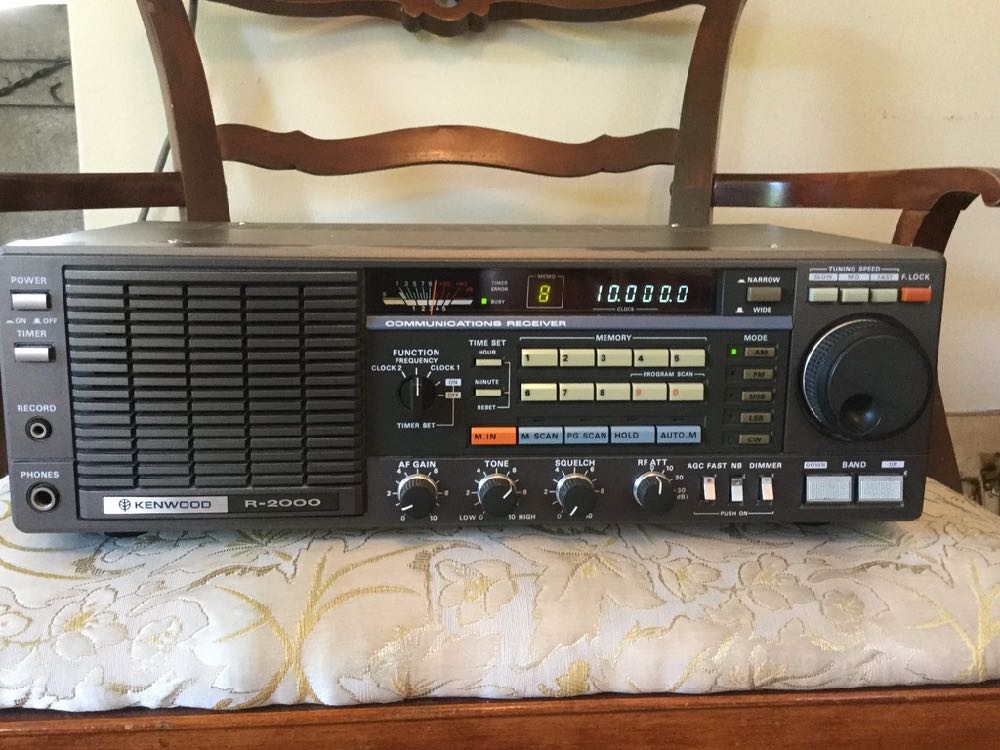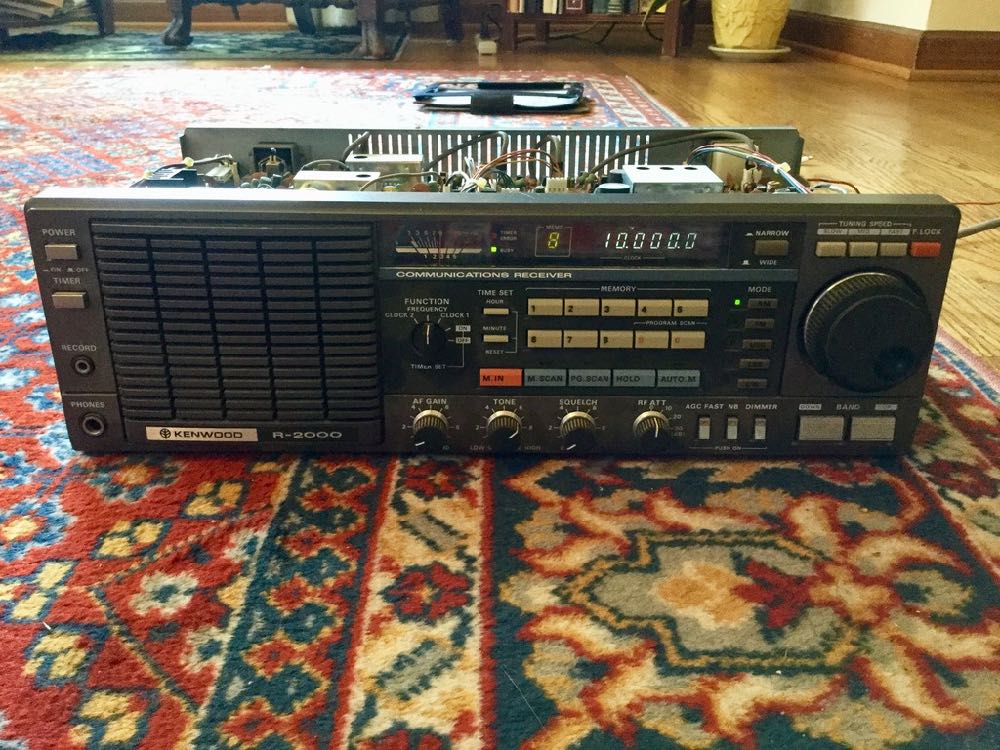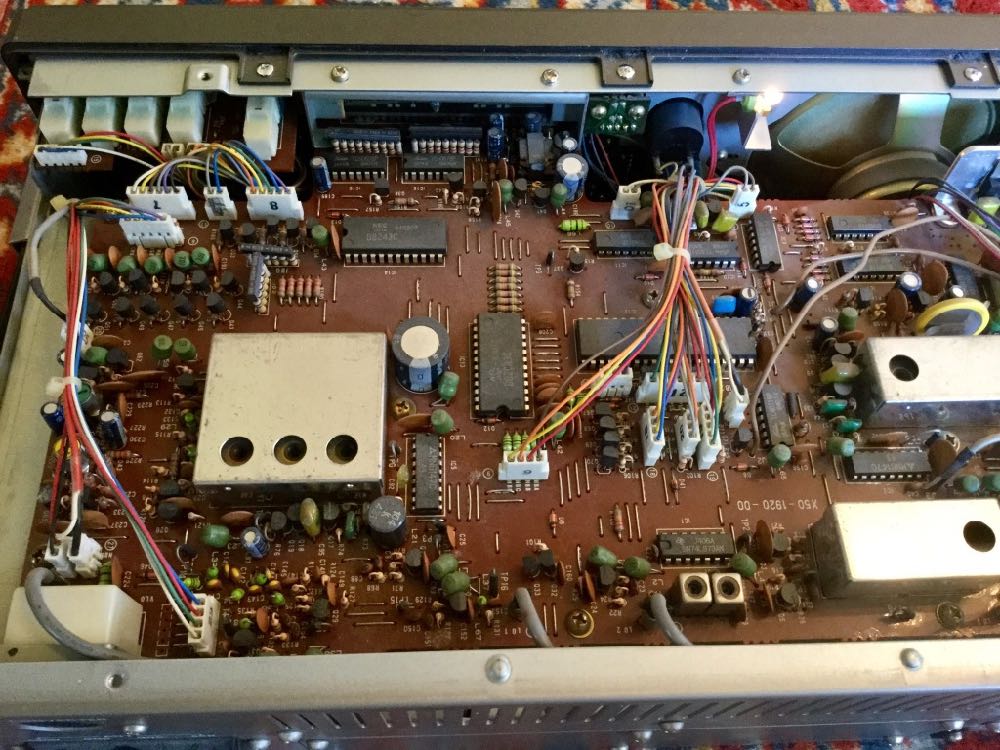Many thanks to SWLing Post contributor, Luke Perry, who writes:
Hi Thomas, I thought I would share with the people on the SWLing Post my new radio purchase.
I needed a receiver with a noise blanker as you might (or might not) recall my issue that I was having with electrical noise at my listening location. So I saw this on the local Craigslist for $50 and called right away and I was lucky to be the first one to respond.
The seller was the original owner and he had bought it back in the 80’s after coming back from Saudi Arabia so he could listen to the BBC. It was fully working but when I got home I noticed that tuning dial was not working and this set does not have direct frequency input for some reason.
I went online and scoured the internet for a possible fix and found a old posting that said to adjust the pots on the encoder board behind the main tuning knob. I found a service manual online and located the position of the board and thankfully that was the fix. But for some reason the position that they both were in was not the correct position so I don’t know if someone had been in there before but I doubt it.
Anyway, I am very happy with the purchase and the noise blanker seems to really work as I could not listen to any frequencies above 5 MHz on my old radio due to RFI. Also, the R-2000 seems to be very sensitive just from the small wire antenna that I have been using so I plan to get a better antenna and I am hoping to get some good DX catches.
Anyway, I thought I would share the news of my new purchase and hopefully the fix for the tuning knob might be of some use to others down the road.
I’m so glad you found the fix for the encoder function, Luke. Thank you for sharing because, no doubt, others will be searching for this solution. Sounds like it was a simple enough fix and certainly did the trick. If you ever need to re-cap the R-2000, you can find kits like this one to make the process easier. If you don’t want to do the work yourself, my friend Vlado recaps radios for a very reasonable price.
I’m sure you know you really snagged a deal grabbing that R-2000 for $50! Wow!




Buenas tardes .tengo problemas con mi receptor kenwood r 2000 .el problema es que al girar la perilla de sintonia . No cambia la frecuencia.espero puedan ayudarme a resolver el problema
Lights up , you can select any fre no static from any ant post i tapped different things tapping mirata
ht lot of static How much to repair a r2000 ?
Hi. The R-2000 arrived for me today. Is it possible to know the manufacturing date by the serial number? (serial n: 6050031)
Would spaying the optodetectors (as mentioned above) damage them ??
I purchased a Kenwood R 2000 years ago…Due to inexperience and antennae issues I have never used this receiver.. Need assistance with the turn on procedure..No dial illumination…and the antennae hook up.
Please help or guide me in the right direction.
Thank you,
Jim McPartlin
Thanks for the tips Ron. I have fingers crossed that it will work as-is for awhile. I didn’t have any canned air but I took it out on the deck and blew off the whole top circuit board and removed most of the dust. And there was a lot. I really had to tweak the pots back and forth for a couple of minutes before it was somewhat stable and then I made the final adjustment by sight by watching the frequency display as I turned the. I do need to get some canned air and clean all of the nooks and crannies eventually.
And Thomas, I will keep Vlado in mind for re-capping the Kenwood down the road. He actually restored my prized Nixie tube World time clock for me a couple of months back. I saw a post from you I think it was recommending him for radio repairs and I contacted him and he was game. He does great work and he really stands behind his work. I had a broken lever in there that he couldn’t repair and he actually fashioned something from a piece of old circuit board I think it was. Very clever guy and he also changed the capacitor out and cleaned some of the pcb traces which were dirty and was causing one of the Nixie tubes to light only partially. I couldn’t recommend him any more highly!
> ” I really had to tweak the pots back and forth for a couple of minutes before it was somewhat stable and then I made the final adjustment by sight by watching the frequency display as I turned the”
Hmmm… shouldn’t be _that_ finicky. Either the pots needed a good clean, or I suspect (more likely) that the 5v rail is low/weak. It’d be worth checking that at the encoder board end, including looking to see if it bounces around as you turn the tuning knob (it shouldn’t).
Given the symptoms, I’d also be inclined to change C1 on the encoder board just on spec – low-voltage, high-value electros of that era are always suspicious, you can’t really test it in-circuit because R3 + VR1 || R4 + VR2 = ~3k across it, and if you’re going to lift one end to test it you may as well replace it anyway 😉
Around here, $50 for a R-2000 – even not working – would be an excellent deal! Well done!
I’ve repaired a few with the same fault. A couple of times the problem was simply dust in the slotted disc or on the optical detectors – a good blow-out with compressed air fixed that. Once it was the 5v supply to the board being low – worth checking that too. But most times it’s been the opto detectors simply wearing out – either the LEDs slowly losing emission, or the optotransistors losing gain.
In the latter cases, adjusting VR1 & VR2 (which set the thresholds for the LM358 dual op-amp [ab]used as a comparator) on the encoder board certainly works, but I’m not sure for how long – both the LEDs & optotransistors will continue to degrade, and the rate tends to increase the more they age. It’s probably a good idea to keep that in mind, & ultimately be prepared to replace them sometime.
I’ve previously used optodetectors out of old trackballs that happened to fit, but it shouldn’t be too hard to find something of a suitable size commercially available. The trick is in aligning them to give the required quadrature output, but it’s not hard to do with a digital scope or even a cheap logic analyser. You could probably even rig something up with an Arduino to report the necessary timing/sequencing/phase info…
Bought one of those new back in the late 80’s from the now defunct EEB (Electronics Equipment Bank) in Vienna, VA. The ‘2000 was one of my best radios, really good performer on LF. And of course I sold it years ago. We all make mistakes, hi hi.
Kenwood also sold an accessory VHF board for that model also.
Glad you were able to get your radio back in working condition. Enjoy it.